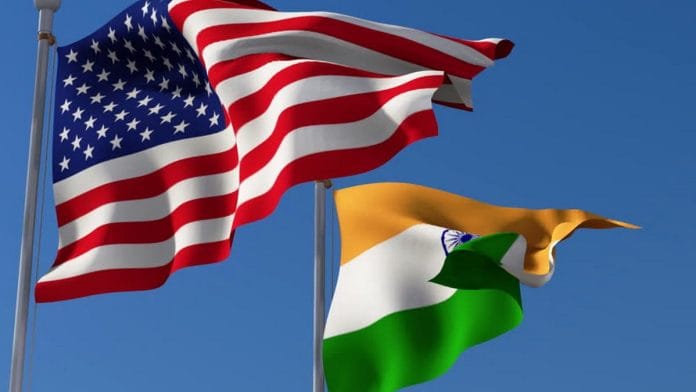Thank you dear subscribers, we are overwhelmed with your response.
Your Turn is a unique section from ThePrint featuring points of view from its subscribers. If you are a subscriber, have a point of view, please send it to us. If not, do subscribe here: https://theprint.in/subscribe/
The U.S. Constitution, adopted in September 1787 and ratified in June 1788, established the first modern democratic republic with a written framework. It became a model for future democracies, incorporating a representative system with checks and balances. Forty-two months later, in December 1791, the First Amendment was ratified, reinforcing individual freedoms.
The Indian Constitution was adopted in November 1949 and came into effect in January 1950, marking the birth of the world’s largest democracy. The First Amendment followed 17 months later in June 1951, as the government sought to overcome legal barriers to social justice.
Both nations crafted their First Amendments as defining moments, yet they could not be more different—America’s was a shield for individual liberty, while India’s became a tool for social justice.
America’s First Amendment: Freedom as an Absolute
The First Amendment of the U.S. Constitution ensured that the government could not infringe on free speech, religious liberty, or the press. This enshrined individual rights as inviolable, creating a system where state intervention in personal freedoms was severely limited. The American model, rooted in fear of tyranny, prioritized personal liberties over collective equity. However, as history unfolded, the challenge of balancing absolute freedom with social justice became evident.
The struggle for civil rights in the U.S. highlights the tension between absolute freedom and social justice. Martin Luther King Jr. became the face of the Civil Rights Movement in the 1950s and 60s, fighting against racial segregation and discrimination. His advocacy for nonviolent resistance, inspired by Mahatma Gandhi, led to landmark achievements such as the Civil Rights Act (1964) and the Voting Rights Act (1965). Despite civil rights victories, economic and racial injustice remained. In the 21st century, the Black Lives Matter (BLM) movement reignited this struggle, highlighting systemic racism and police brutality. Sparked by George Floyd’s killing in 2020, BLM emphasized that legal protections alone are insufficient without real equity.
India’s First Amendment: Justice Over Liberty
By 1950, India, newly independent, was grappling with economic disparity and social hierarchy. The Constitution promised justice, yet legal barriers emerged—land reforms were struck down by courts, and caste-based reservations faced challenges. Unlike the U.S., where democracy aimed to limit state power, India’s First Amendment expanded government authority to dismantle systemic oppression.
The zamindari system, a relic of colonial rule, concentrated land ownership in the hands of a few while peasants remained powerless. Efforts to redistribute land were blocked by courts, which upheld the fundamental right to property. Congress leaders, including Nehru and Patel, realized that constitutional amendments were necessary to break these structures.
Alongside land reform, caste discrimination remained a deep-rooted social evil. Dalits were barred from education, employment, and public spaces. While the Justice Party in Tamil Nadu pioneered affirmative action in the 1920s, national policies faced legal challenges. Ambedkar, the architect of the Constitution, fought for caste-based reservations, but courts ruled them unconstitutional.
The court’s ruling in Champakam Dorairajan v. State of Madras (1951) struck down caste-based reservations, arguing they violated fundamental rights. Similarly, in Kameshwar Singh v. State of Bihar (1952), the Patna High Court ruled that land reforms, which sought to redistribute land from zamindars to tenants, violated the fundamental right to property under Article 31. The court emphasized that compensation must be paid at fair market value, making large-scale land redistribution financially unfeasible. This created a paradox—laws meant to protect the oppressed were deemed unconstitutional, prompting Nehru to act decisively.
To uphold social justice, Nehru’s government introduced the First Amendment in June 1951, fundamentally altering India’s constitutional framework. This amendment sought to resolve the legal challenges that obstructed land reforms and caste-based reservations, ensuring that state policies aimed at uplifting the marginalized could not be easily overturned by the judiciary. It marked a significant shift in governance, prioritizing socio-economic equality over rigid constitutional constraints.
The First Amendment introduced transformative changes to remove judicial obstacles that hindered social justice policies. These key provisions included:
- Ninth Schedule – Placed land reform and affirmative action laws beyond judicial review, allowing the state to implement policies without legal obstruction.
- Article 15(4) – Provided a constitutional basis for caste-based reservations, ensuring affirmative action for socially and educationally disadvantaged groups.
- Article 31A & 31B – Protected land redistribution policies from being overturned by courts, reinforcing the government’s authority to implement agrarian reforms and economic justice measures.
Unlike America’s First Amendment, which restricted government power, India’s expanded it, prioritizing collective equity over absolute freedom.
Democracy, the Indian Way
Western democracies built their foundations on individual rights, often turning a blind eye to the deep chasms of economic and social inequality. India, from the very beginning, refused to follow that path. Its democracy was not merely about granting freedom but about dismantling centuries of entrenched oppression. The First Amendment was more than a legal revision—it was a battle cry, a bold declaration that democracy must serve the millions long denied their rightful place in society. By choosing justice over rigid constitutional formalism, India redefined democracy as an evolving force, one that actively corrected historical wrongs. This amendment laid the foundation for a democracy that wasn’t just about protecting the powerful but empowering the marginalized—a vision that continues to shape India’s political landscape.
These pieces are being published as they have been received – they have not been edited/fact-checked by ThePrint


